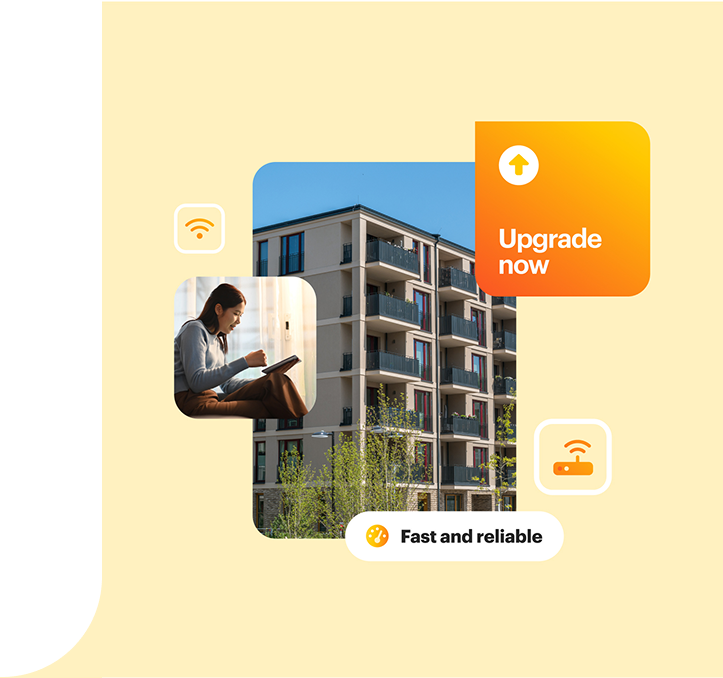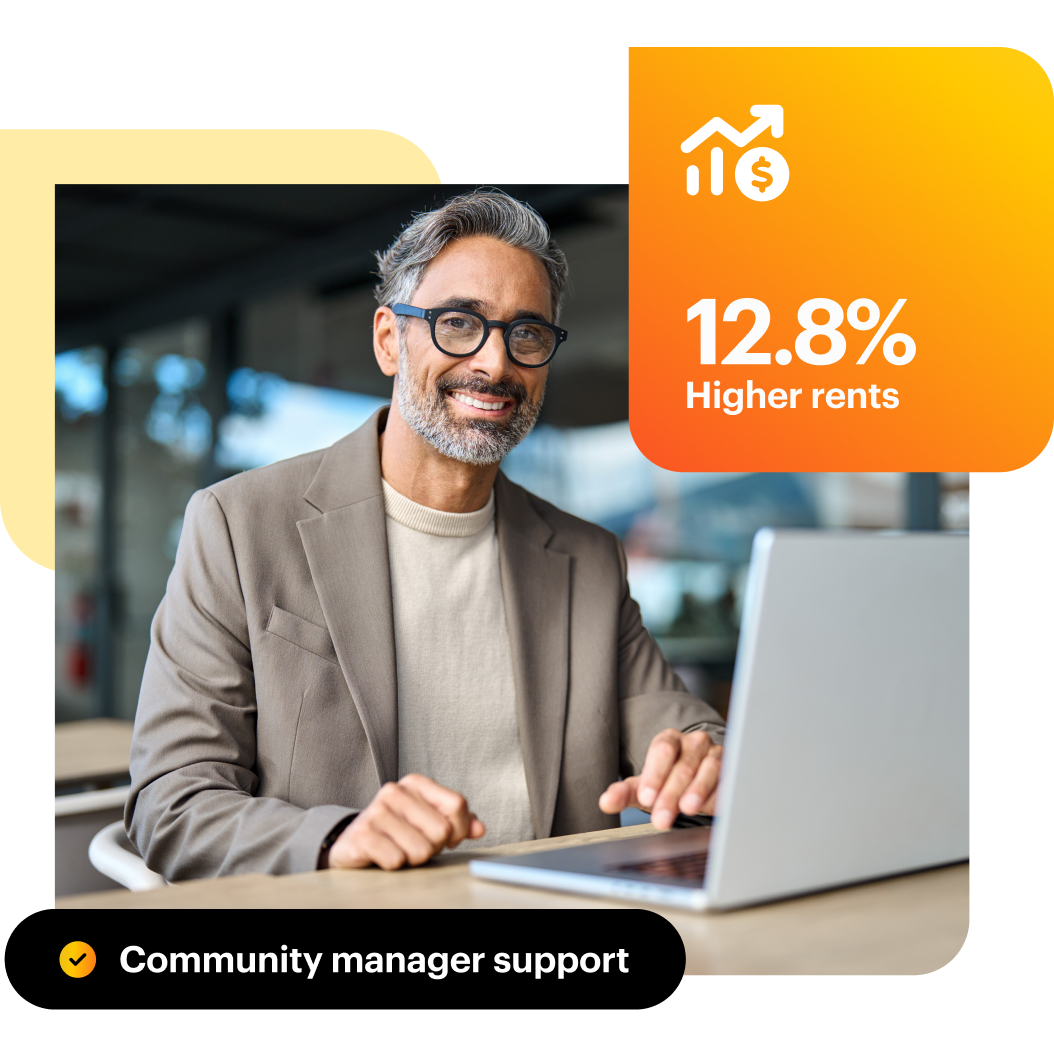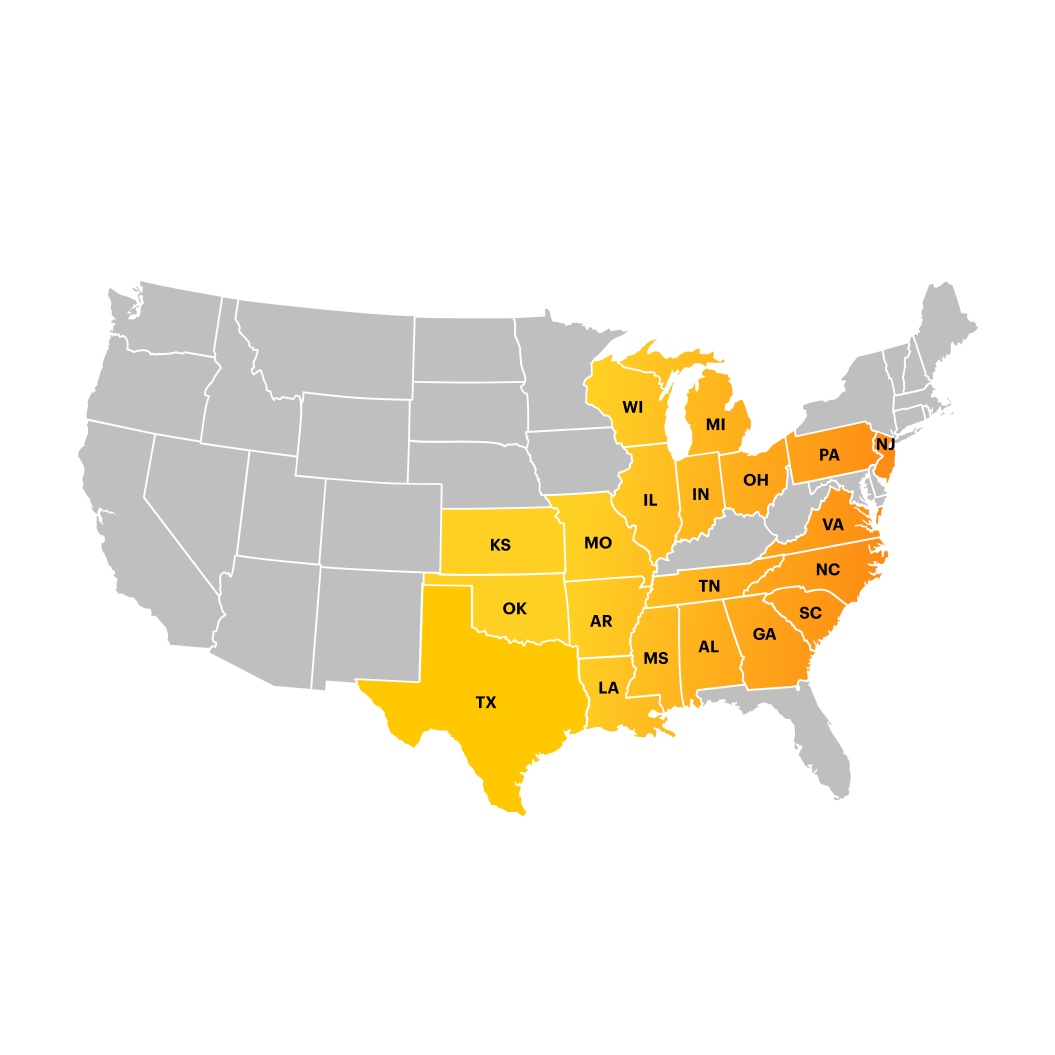Upgrade your property to ultrafast fiber
Build with Brightspeed
Upgrade your property to ultrafast fiber
Build with Brightspeed
Upgrade your property to ultrafast fiber
Build with Brightspeed

Why Brightspeed?
We’re one of top-rated providers in the nation, bringing ultrafast next-gen fiber internet to over 1.2M customers in 20 states. Whether you have a new or existing property, we’d love to build together.
Why Brightspeed?
We’re one of top-rated providers in the nation, bringing ultrafast next-gen fiber internet to over 1.2M customers in 20 states. Whether you have a new or existing property, we’d love to build together.
Why Brightspeed?
We’re one of top-rated providers in the nation, bringing ultrafast next-gen fiber internet to over 1.2M customers in 20 states. Whether you have a new or existing property, we’d love to build together.
Brightspeed Fiber is a
must-have
Brightspeed Fiber is a
must-have
Brightspeed Fiber is a
must-have
For property owners
- Fiber internet attracts tenants and captures 12.8% higher rents according to the Fiber Broadband Association
- Our fiber is ultrafast and more reliable than cable, with symmetrical upload and download speeds and less latency and lag
- Brightspeed Fiber futureproofs your property thanks to next-gen FTTP, XGS PON for multi-gig connections, and the latest WiFi 6 tech
- We support your fiber upgrade with a dedicated Community Manager to support your team, as well as future residents, so there are less calls to your office.


For residents
- Brightspeed was rated the #1 Fastest ISP by FiberBroadband.com so residents get the speed they need
- Our fiber provides more reliability over cable, with less buffering and lag
- Our service is no-nonsense, with no data caps, annual contracts, or cancellation fees
- Customers love us. We have a “Great” rating on Trustpilot with over 10,000 four-star reviews.
Where we are
Brightspeed is a trusted name in internet service with over 121,000 locations across 20 states.

Frequently Asked Questions
Why should I choose fiber internet for my subdivision from Brightspeed?
- Speed:
- Fiber internet offers dramatically faster download and upload speeds compared to cable or DSL, allowing for smoother streaming, gaming, and file sharing.
- Reliability:
- Fiber optic cables are more durable and less prone to interference than traditional copper cables, ensuring a more reliable and consistent connection.
- Scalability:
- Fiber optic cables are more durable and less prone to interference than traditional copper cables, ensuring a more reliable and consistent connection.
- Symmetrical Speeds:
- Fiber offers the same fast speeds for both uploads and downloads, which is crucial for activities like video conferencing and uploading large files.
- Reduced Latency:
- Fiber reduces latency, which is the delay before data transfer begins, resulting in more responsive online activities.
- Enhanced Smart Home Support:
- Fiber's high bandwidth supports smart home technologies, improving quality of life and security.
- Future-Proofing:
- Fiber's infrastructure is capable of handling the increasing bandwidth requirements of future technologies.
- Speed:
- Fiber internet offers dramatically faster download and upload speeds compared to cable or DSL, allowing for smoother streaming, gaming, and file sharing.
- Reliability:
- Fiber optic cables are more durable and less prone to interference than traditional copper cables, ensuring a more reliable and consistent connection.
- Scalability:
- Fiber optic cables are more durable and less prone to interference than traditional copper cables, ensuring a more reliable and consistent connection.
- Symmetrical Speeds:
- Fiber offers the same fast speeds for both uploads and downloads, which is crucial for activities like video conferencing and uploading large files.
- Reduced Latency:
- Fiber reduces latency, which is the delay before data transfer begins, resulting in more responsive online activities.
- Enhanced Smart Home Support:
- Fiber's high bandwidth supports smart home technologies, improving quality of life and security.
- Future-Proofing:
- Fiber's infrastructure is capable of handling the increasing bandwidth requirements of future technologies.
- Speed:
- Fiber internet offers dramatically faster download and upload speeds compared to cable or DSL, allowing for smoother streaming, gaming, and file sharing.
- Reliability:
- Fiber optic cables are more durable and less prone to interference than traditional copper cables, ensuring a more reliable and consistent connection.
- Scalability:
- Fiber optic cables are more durable and less prone to interference than traditional copper cables, ensuring a more reliable and consistent connection.
- Symmetrical Speeds:
- Fiber offers the same fast speeds for both uploads and downloads, which is crucial for activities like video conferencing and uploading large files.
- Reduced Latency:
- Fiber reduces latency, which is the delay before data transfer begins, resulting in more responsive online activities.
- Enhanced Smart Home Support:
- Fiber's high bandwidth supports smart home technologies, improving quality of life and security.
- Future-Proofing:
- Fiber's infrastructure is capable of handling the increasing bandwidth requirements of future technologies.
How does fiber impact my property value?
- A study by the FTTH Council Americas revealed that fiber broadband can increase rental values in MDU by 8% and property values by 2.8%. (Fiber Broadband Association – When Fiber Leads, the Future Follow.)
- The Fiber Broadband Association (FBA) research indicated that fiber broadband can increase the net income per average unit for MDU owners and service providers by as much as 11%. (Fiber Broadband Association - Google Search)
- Tenant retention can also be improved, leading to a more stable income stream for property owners.
- A 2023 study by the FBA and RVA found that fiber internet can increase a home’s value up to 4.9%. The-Status-of-U.S.-Broadband-2023.pdf
- A study by the FTTH Council Americas revealed that fiber broadband can increase rental values in MDU by 8% and property values by 2.8%. (Fiber Broadband Association – When Fiber Leads, the Future Follow.)
- The Fiber Broadband Association (FBA) research indicated that fiber broadband can increase the net income per average unit for MDU owners and service providers by as much as 11%. (Fiber Broadband Association - Google Search)
- Tenant retention can also be improved, leading to a more stable income stream for property owners.
- A 2023 study by the FBA and RVA found that fiber internet can increase a home’s value up to 4.9%. The-Status-of-U.S.-Broadband-2023.pdf
- A study by the FTTH Council Americas revealed that fiber broadband can increase rental values in MDU by 8% and property values by 2.8%. (Fiber Broadband Association – When Fiber Leads, the Future Follow.)
- The Fiber Broadband Association (FBA) research indicated that fiber broadband can increase the net income per average unit for MDU owners and service providers by as much as 11%. (Fiber Broadband Association - Google Search)
- Tenant retention can also be improved, leading to a more stable income stream for property owners.
- A 2023 study by the FBA and RVA found that fiber internet can increase a home’s value up to 4.9%. The-Status-of-U.S.-Broadband-2023.pdf
Is there an installation cost or upfront cost for fiber agreements with Brightspeed?
- No. Brightspeed will evaluate your subdivision to place our fiber to every home or unit without requiring any financial aid from the builder or developer.
- Note: this response doesn’t relate to the question. Brightspeed aims to expand high-speed fiber internet access to underserved communities. Our primary goal is to deliver transformative fiber broadband connections to areas that lack adequate internet access, particularly rural areas. Brightspeed's expansion plans include reaching more than 5 million locations across its 20-state footprint.
- No. Brightspeed will evaluate your subdivision to place our fiber to every home or unit without requiring any financial aid from the builder or developer.
- Note: this response doesn’t relate to the question. Brightspeed aims to expand high-speed fiber internet access to underserved communities. Our primary goal is to deliver transformative fiber broadband connections to areas that lack adequate internet access, particularly rural areas. Brightspeed's expansion plans include reaching more than 5 million locations across its 20-state footprint.
- No. Brightspeed will evaluate your subdivision to place our fiber to every home or unit without requiring any financial aid from the builder or developer.
- Note: this response doesn’t relate to the question. Brightspeed aims to expand high-speed fiber internet access to underserved communities. Our primary goal is to deliver transformative fiber broadband connections to areas that lack adequate internet access, particularly rural areas. Brightspeed's expansion plans include reaching more than 5 million locations across its 20-state footprint.
What technology does Brightspeed use to deploy fiber internet?
- Brightspeed uses XGS-PON (10-Gigabit Symmetric Passive Optical Network) technology for its fiber internet network. This technology enables Brightspeed to offer multi-gigabit speeds and consistent responsiveness, according to Brightspeed. Brightspeed is deploying XGS-PON infrastructure to replace DSL infrastructure and expand internet access in various areas.
- Brightspeed uses XGS-PON (10-Gigabit Symmetric Passive Optical Network) technology for its fiber internet network. This technology enables Brightspeed to offer multi-gigabit speeds and consistent responsiveness, according to Brightspeed. Brightspeed is deploying XGS-PON infrastructure to replace DSL infrastructure and expand internet access in various areas.
- Brightspeed uses XGS-PON (10-Gigabit Symmetric Passive Optical Network) technology for its fiber internet network. This technology enables Brightspeed to offer multi-gigabit speeds and consistent responsiveness, according to Brightspeed. Brightspeed is deploying XGS-PON infrastructure to replace DSL infrastructure and expand internet access in various areas.
How does fiber integrate with my building design?
- Brightspeed's fiber internet installation process generally involves minimal changes to your building design.
- External Connection:
- Brightspeed will install a fiber cable from the street to a clamshell or similar enclosure on your property.
- Internal Connection:
- The cable from the clamshell will be connected to the ONT, which is typically installed inside your home, often near your router.
- Potential for Underground Installation:
- In many cases, the fiber cable will be buried underground, requiring some excavation.
- Brightspeed requires a path in an MDU from the telecom room to every unit for fiber. We can provide the microduct and allow your builder to install.
- Brightspeed fiber requires electrical power.
- Our Sales Engineers will provide a custom scope of work for your project.
- Brightspeed's fiber internet installation process generally involves minimal changes to your building design.
- External Connection:
- Brightspeed will install a fiber cable from the street to a clamshell or similar enclosure on your property.
- Internal Connection:
- The cable from the clamshell will be connected to the ONT, which is typically installed inside your home, often near your router.
- Potential for Underground Installation:
- In many cases, the fiber cable will be buried underground, requiring some excavation.
- Brightspeed requires a path in an MDU from the telecom room to every unit for fiber. We can provide the microduct and allow your builder to install.
- Brightspeed fiber requires electrical power.
- Our Sales Engineers will provide a custom scope of work for your project.
- Brightspeed's fiber internet installation process generally involves minimal changes to your building design.
- External Connection:
- Brightspeed will install a fiber cable from the street to a clamshell or similar enclosure on your property.
- Internal Connection:
- The cable from the clamshell will be connected to the ONT, which is typically installed inside your home, often near your router.
- Potential for Underground Installation:
- In many cases, the fiber cable will be buried underground, requiring some excavation.
- Brightspeed requires a path in an MDU from the telecom room to every unit for fiber. We can provide the microduct and allow your builder to install.
- Brightspeed fiber requires electrical power.
- Our Sales Engineers will provide a custom scope of work for your project.
Would a bulk contract be a benefit to explore for my community?
A bulk contract for internet service in a community—such as a neighborhood, apartment complex, condo association, or homeowner’s association (HOA)—can be very helpful for several key reasons:
- Cost Savings for Residents
- Economies of scale: By negotiating as a group, the community can secure a lower per-unit price than individuals would get on their own.
- Residents often pay less overall compared to subscribing individually, even if the fee is included in rent or HOA dues.
- Simplified Billing
- Billing can be handled through rent, HOA dues, or a single community payment system, reducing hassle.
- Convenience for Residents
- Move-in ready: New residents have internet service active immediately without setup delays.
- No shopping around: Residents don’t need to compare pricing on their own.
- Increased Property Value and Appeal
- Reliable, high-speed internet included in the cost of living can be a selling point for rentals and homes, attracting more residents or buyers.
Note: one the benefits of fiber is that it is also a green energy, using much less electrical power from the grid to power its electronics vs. traditional copper and coax technologies.
Here's why:
- Energy Efficiency: Fiber optic cables transmit data using light signals, requiring significantly less energy than copper or coax cables, which use electrical signals. This translates to lower power consumption for both data transmission and network infrastructure.
- Reduced Need for Amplification: Copper and coaxial cables experience signal degradation over long distances, necessitating the use of energy-consuming amplifiers or repeaters. Fiber optic cables, with their low attenuation (signal loss), can transmit data much farther without requiring such devices, reducing overall energy usage.
- Lower Cooling Needs: Data centers and network equipment for copper-based systems generate more heat due to electrical resistance, requiring energy-intensive cooling systems. Fiber optics, on the other hand, generate less heat, reducing cooling requirements.
- Longer Lifespan and Durability: Fiber optic cables are more durable and have a significantly longer lifespan (potentially decades) than copper cables, which are more susceptible to damage from environmental factors like moisture and corrosion. This longer lifespan means fewer replacements and less associated manufacturing and disposal.
- Reduced E-waste: The longevity and durability of fiber optics lead to less frequent replacements and upgrades, resulting in a reduction in electronic waste (e-waste). E-waste can pose environmental risks if not handled properly.
- Lower Material Usage in Manufacturing: Fiber optic cables are typically thinner and lighter than copper cables, requiring fewer raw materials for production. Copper mining can be resource-intensive and potentially harmful to the environment.
- Support for Sustainable Practices: Fiber optic networks enable technologies like remote work and smart cities, which can further reduce carbon emissions by minimizing the need for physical travel and optimizing energy usage.
Source: U.C. Santa Barbara https://iee.ucsb.edu/news-events/news/advocates-claim-fiber-greener-copper-or-cable
A bulk contract for internet service in a community—such as a neighborhood, apartment complex, condo association, or homeowner’s association (HOA)—can be very helpful for several key reasons:
- Cost Savings for Residents
- Economies of scale: By negotiating as a group, the community can secure a lower per-unit price than individuals would get on their own.
- Residents often pay less overall compared to subscribing individually, even if the fee is included in rent or HOA dues.
- Simplified Billing
- Billing can be handled through rent, HOA dues, or a single community payment system, reducing hassle.
- Convenience for Residents
- Move-in ready: New residents have internet service active immediately without setup delays.
- No shopping around: Residents don’t need to compare pricing on their own.
- Increased Property Value and Appeal
- Reliable, high-speed internet included in the cost of living can be a selling point for rentals and homes, attracting more residents or buyers.
Note: one the benefits of fiber is that it is also a green energy, using much less electrical power from the grid to power its electronics vs. traditional copper and coax technologies.
Here's why:
- Energy Efficiency: Fiber optic cables transmit data using light signals, requiring significantly less energy than copper or coax cables, which use electrical signals. This translates to lower power consumption for both data transmission and network infrastructure.
- Reduced Need for Amplification: Copper and coaxial cables experience signal degradation over long distances, necessitating the use of energy-consuming amplifiers or repeaters. Fiber optic cables, with their low attenuation (signal loss), can transmit data much farther without requiring such devices, reducing overall energy usage.
- Lower Cooling Needs: Data centers and network equipment for copper-based systems generate more heat due to electrical resistance, requiring energy-intensive cooling systems. Fiber optics, on the other hand, generate less heat, reducing cooling requirements.
- Longer Lifespan and Durability: Fiber optic cables are more durable and have a significantly longer lifespan (potentially decades) than copper cables, which are more susceptible to damage from environmental factors like moisture and corrosion. This longer lifespan means fewer replacements and less associated manufacturing and disposal.
- Reduced E-waste: The longevity and durability of fiber optics lead to less frequent replacements and upgrades, resulting in a reduction in electronic waste (e-waste). E-waste can pose environmental risks if not handled properly.
- Lower Material Usage in Manufacturing: Fiber optic cables are typically thinner and lighter than copper cables, requiring fewer raw materials for production. Copper mining can be resource-intensive and potentially harmful to the environment.
- Support for Sustainable Practices: Fiber optic networks enable technologies like remote work and smart cities, which can further reduce carbon emissions by minimizing the need for physical travel and optimizing energy usage.
Source: U.C. Santa Barbara https://iee.ucsb.edu/news-events/news/advocates-claim-fiber-greener-copper-or-cable
A bulk contract for internet service in a community—such as a neighborhood, apartment complex, condo association, or homeowner’s association (HOA)—can be very helpful for several key reasons:
- Cost Savings for Residents
- Economies of scale: By negotiating as a group, the community can secure a lower per-unit price than individuals would get on their own.
- Residents often pay less overall compared to subscribing individually, even if the fee is included in rent or HOA dues.
- Simplified Billing
- Billing can be handled through rent, HOA dues, or a single community payment system, reducing hassle.
- Convenience for Residents
- Move-in ready: New residents have internet service active immediately without setup delays.
- No shopping around: Residents don’t need to compare pricing on their own.
- Increased Property Value and Appeal
- Reliable, high-speed internet included in the cost of living can be a selling point for rentals and homes, attracting more residents or buyers.
Note: one the benefits of fiber is that it is also a green energy, using much less electrical power from the grid to power its electronics vs. traditional copper and coax technologies.
Here's why:
- Energy Efficiency: Fiber optic cables transmit data using light signals, requiring significantly less energy than copper or coax cables, which use electrical signals. This translates to lower power consumption for both data transmission and network infrastructure.
- Reduced Need for Amplification: Copper and coaxial cables experience signal degradation over long distances, necessitating the use of energy-consuming amplifiers or repeaters. Fiber optic cables, with their low attenuation (signal loss), can transmit data much farther without requiring such devices, reducing overall energy usage.
- Lower Cooling Needs: Data centers and network equipment for copper-based systems generate more heat due to electrical resistance, requiring energy-intensive cooling systems. Fiber optics, on the other hand, generate less heat, reducing cooling requirements.
- Longer Lifespan and Durability: Fiber optic cables are more durable and have a significantly longer lifespan (potentially decades) than copper cables, which are more susceptible to damage from environmental factors like moisture and corrosion. This longer lifespan means fewer replacements and less associated manufacturing and disposal.
- Reduced E-waste: The longevity and durability of fiber optics lead to less frequent replacements and upgrades, resulting in a reduction in electronic waste (e-waste). E-waste can pose environmental risks if not handled properly.
- Lower Material Usage in Manufacturing: Fiber optic cables are typically thinner and lighter than copper cables, requiring fewer raw materials for production. Copper mining can be resource-intensive and potentially harmful to the environment.
- Support for Sustainable Practices: Fiber optic networks enable technologies like remote work and smart cities, which can further reduce carbon emissions by minimizing the need for physical travel and optimizing energy usage.
Source: U.C. Santa Barbara https://iee.ucsb.edu/news-events/news/advocates-claim-fiber-greener-copper-or-cable

